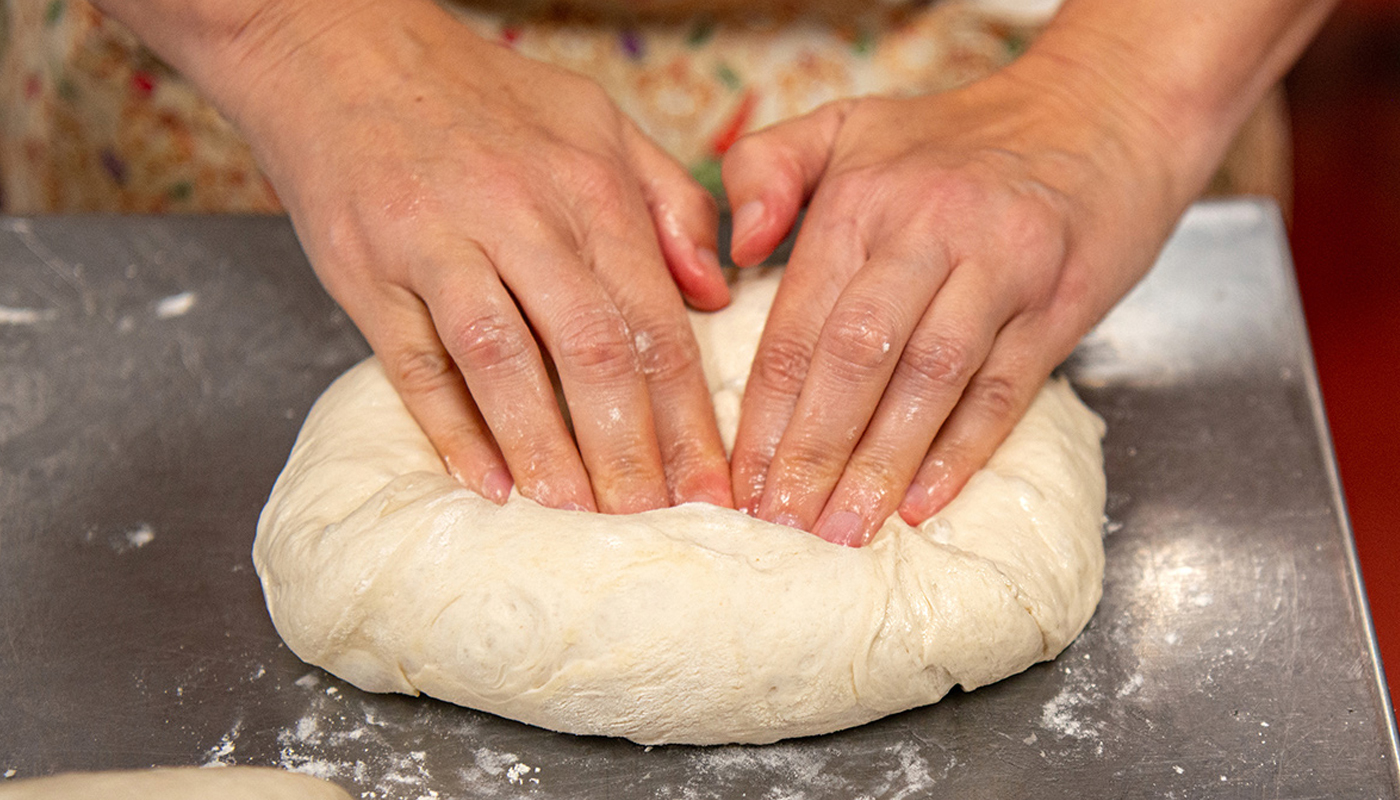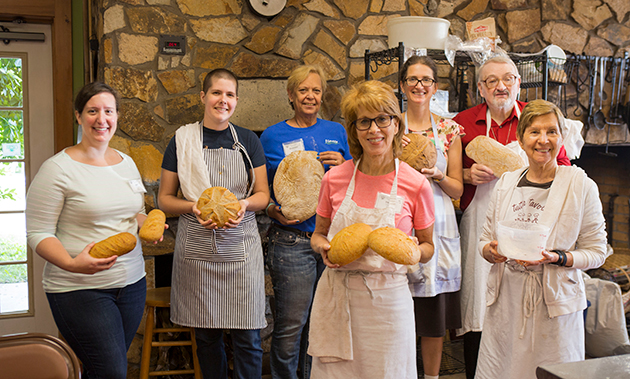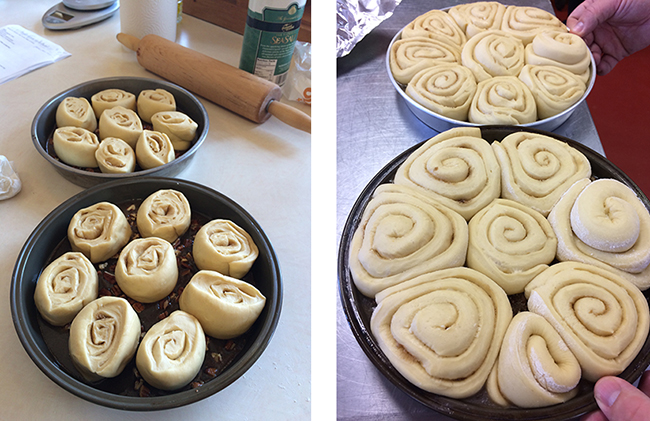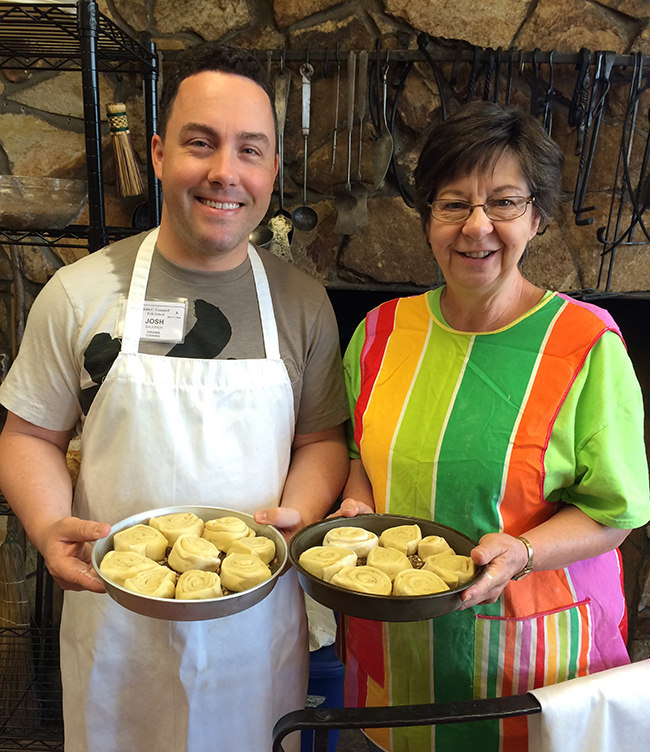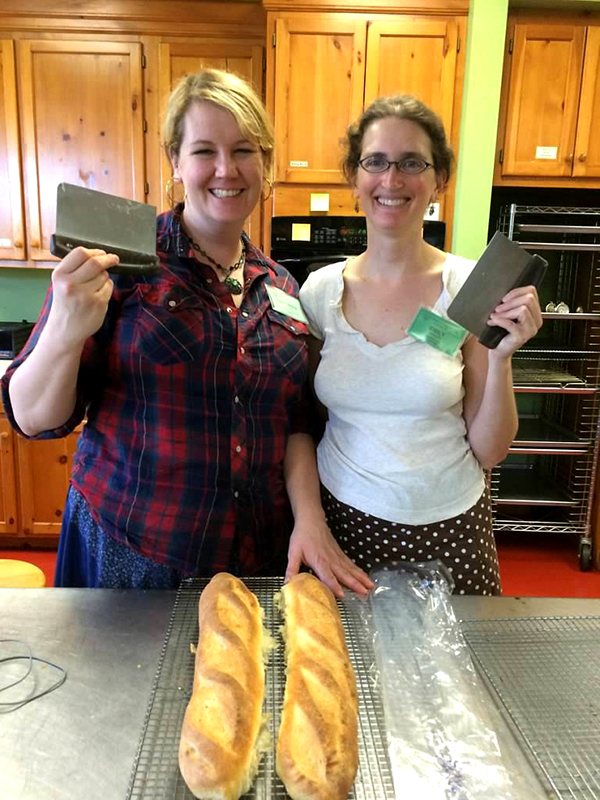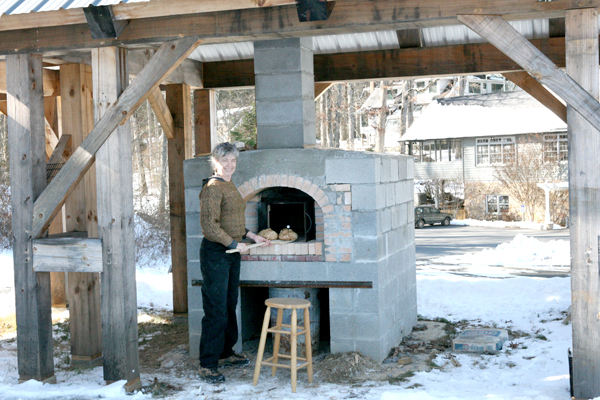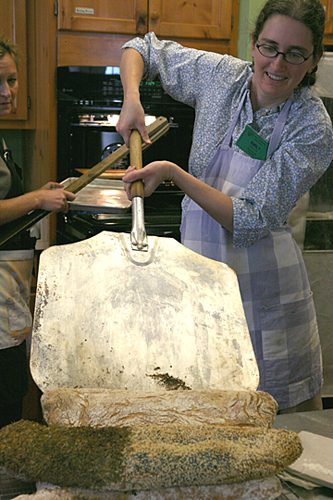[caption id="attachment_10916" align="aligncenter" width="459"]

Emily demonstrates how to shape focaccia dough to the class[/caption]
You wouldn’t start your oil painting career at an easel on the midway of the state fairgrounds, surrounded by people, tents, and trees with the sky overhead and the light shifting throughout the day. Instead you’d set up some apples on a tablecloth, lit by a desk lamp to create obvious shadows that don’t move. Once you’d practiced how to capture a simple scene—sketching it out, building the shadows, painting the background to make the objects pop—you’d move on, maybe to a plant or some dishware.
[caption id="attachment_10911" align="alignleft" width="212"]
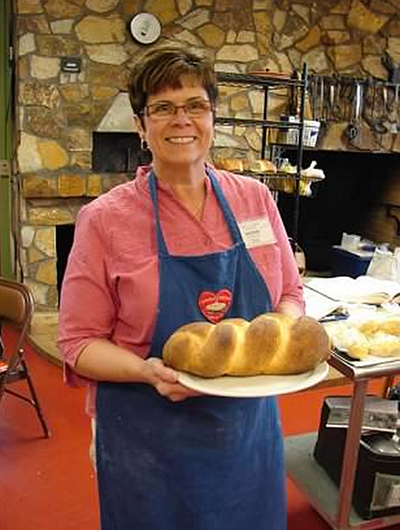
Finished loaf[/caption]
Similarly, last week’s “Science of Bread” class started with the most basic bread possible: a French baguette made with flour, yeast, water, and salt. Each student made a pair of baguettes on Monday, with the class moving one step at a time. Keeping everyone on one schedule enabled me to demo each step of the process (kneading, folding, shaping, baking) as it happened. While the doughs rose, we discussed the chemistry occurring inside and how it affects the final product. We covered practical tips for managing dough at home, like using a desk lamp to keep rising dough warm in winter months; best practices, like using a pizza stone in the oven (and how to use it properly!); and tricks to get better bread, like preheating your oven hotter than desired to make up for the heat lost when the door opens to load the dough.




